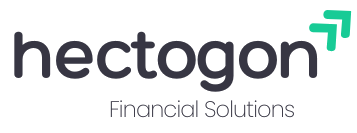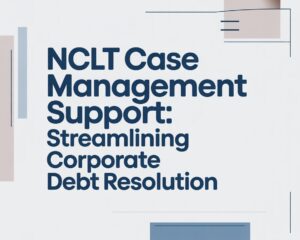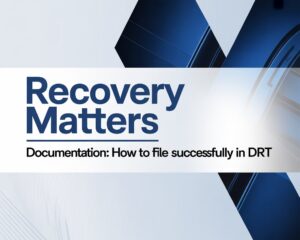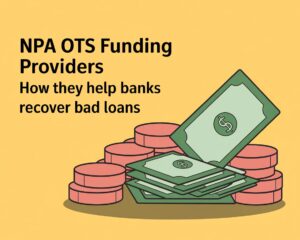India’s real estate sector has been one of the most important contributors to the country’s economy for a long time. However, with volatile market conditions, project delays, and liquidity crises, a significant portion of advances to realty developers have become Non-Performing Assets (NPAs). This rising obstacle has compelled financial institutions to find a new way of managing distressed assets and recovering them.
Traditionally, banks took a legalistic route to NPAs with foreclosure properties. But in the last few years, banks NPA real estate recovery has transformed dramatically with data-backed models, partnership-based models, and innovative models. We are going to see how these novel techniques are allowing lenders to restore the balance sheets to health, all whilst managing the exit of stuck real estate and realizing value at the end of the process.
Understanding the Challenge: NPAs in India’s Real Estate Sector
India has witnessed exponential growth in the real estate sector it has also been among the most NPA-laden ones. Big loan defaults due to delayed approvals, stalled projects, and oversupply in some regions. For banks, it means that such non-performing loans get stuck in the form of capital, must have higher provisioning, which will adversely affect the overall profitability of banks.
Real estate NPAs tend to be more challenging to resolve when compared with other sectors due to the nature of underlying assets, the number of stakeholders, regulatory complexities, and a longer project lifecycle. And this is why today lenders need innovative recovery strategies.
1. Asset Reconstruction Companies (ARCs) and Strategic Partnerships
A notable innovation in lender strategies NPA real estate has been the increasing synergy with asset reconstruction companies (ARCs). Banks now offload stressed assets to ARCs, which will either revive or monetize these assets, instead of retaining them and managing the recovery process themselves.
ARCs typically:
Acquiring bad loans from banks at a steep discount
Focus on project delivery, re-organization, or divestiture.
Join up with investors or builders who can restart dead projects.
This partnership-based approach not only facilitates banks in unlocking balance sheets but also alleviates provisioning pressure and supports quicker realty recovery.
2. Resolution Through Joint Ventures and Co-Lending Models
Lenders are increasingly venturing into joint developments with private builders or institutional investors to quicken the pace of banks NPA real estate recovery. These arrangements involve providing either financing from the bank or the transfer of ownership rights, with the partner assuming responsibility for the project and leaving it up for sale.
Through co-lending or co-investment models, risk and reward will be shared by both parties. This hybrid approach between traditional practices and agile practices results in solution delivery in a smaller timeline, thereby increasing the feature value and recovery value.
3. Technology-Driven Asset Valuation and Monitoring
Technology-led proceedings in solving NPAs have become a game-changer for real estate. Conventional valuation methods created unrealistic recovery expectations or delays. These days, AI-fueled analytics or GIS-based mapping tools determine the actual property market value for lenders.
Some key innovations include:
AI-driven asset tracking: Real-time project status tracking and valuations.
Predictive analytics : Calculating the optimal recovery solution for the market
Online auctions: Where transparency meets efficiency in the selling of distressed real estate assets.
These technologies will empower banks to make prudent recovery decisions and avoid subsequent asset deterioration.
4. Inviting Institutional Investors and REIT Participation
The third positive could be institution / REIT inclusion in NPA resolution real estate companies. This is evident as banks are now bundling substantial NPA portfolios into structured investment vehicles, which are appealing to domestic as well as foreign investors.
Distressed assets are a bargain for REITs and private equity funds, particularly once restructured or redeveloped. Doing so increases liquidity for the banks as well as brings in new liquidity to the real estate ecosystem, reviving halted projects.
5. Legal and Policy Reforms Supporting Recovery
The improved legal framework in India has led to a considerable amount of NPA real estate recovery by banks. Also, policies like the IBC and amendments in the SARFAESI Act have made the process of asset seizure, restructuring, or liquidation smoother.
And recent government measures, such as stress funds to encourage stalled housing projects, have also made it easier for lenders to recover their money. The increased role played by the National Asset Reconstruction Company (NARCL) also shows India is gearing up to strengthen the NPA ecosystem.
6. Turnaround Specialists and Resolution Advisory Firms
Banks have since then learnt to use specialized NPA resolution real estate companies, which have changed the way recovery happens. These firms offer a variety of services such as:
Project viability assessment
Financial restructuring and modeling
Negotiation with borrowers
Asset sale and liquidation strategies
When they mobilize professional recovery advisors, banks also get strategic direction and operational scale. We ensure collaborative recovery efforts that are systematic, secure, and yield higher ROI.
7. Focus on Sustainable and Socially Responsible Recovery
Even during recovery, lenders are also looking at sustainability and community impact in the current real estate landscape. Some recovery proposals pivot stalled projects away from demolition or liquidation and towards affordable housing, co-living spaces, or green developments.
A common place for an approach to resolving NPAs in real estate through an enterprise that is socially oriented has the potential for businesses to engage with corporate social responsibility (CSR) and philanthropic endeavors, with a side benefit of economic viability for everyone, ultimately also for the environmental sustainability we are looking for.
8. Market-Linked Recovery Mechanisms
Banks are trying market-linked recovery mechanisms to eventually overcome the illiquidity of some real estate assets. These include:
Milestone based payment: Buyers can pay in parts, based on the milestones of the project.
Revenue-sharing agreements: Developers and lenders will share the profit made upon completion of the projects.
Securities of distressed assets: Convert bad loans into tradable securities to investors.
These novel finance tools can assist lenders in extracting the most utility from the assets they hold that would otherwise sit idle.
Strengthening Internal NPA Management Teams
Top banks have now started creating in-house NPA management cells for realty recovery. They deploy analytics, legal, and risk management systems to identify the earliest signs of stress and intervene proactively to reduce the risk of accounts going non-performing.
This is a proactive and resilient recovery framework that banks are forming by merging the in-house jitteriness with professional external backup.
Conclusion
Banks will need a combination of innovation, collaboration, and technology to carry out successful NPA real estate recovery in the future. With the Indian real estate sector evolving, lenders need to implement a modern, multi-faceted recovery strategy that brings together financial and digital intelligence.
Hectagon provides full end-to-end support in NPA real estate management, lender strategies NPA real estate for recovery and restructure stalled or distressed projects, by leveraging the richest library of sector knowledge and insights available to banks looking to maximize on distressed lending opportunities, backed by the faintest of industry expertise.
FAQs
What are the main reasons for NPAs in India’s real estate sector?
Rising resolving NPAs in real estate sector are primarily attributed to delays in approvals, ineffective management of cash flows, economic slowdowns, and over-leveraging by developers.
How do ARCs help in banks’ NPA real estate recovery?
By acquiring these bad loans from banks and working on restructuring or selling the properties, Asset Reconstruction Companies are offering lenders a way to unlock capital while also reducing the NPA burden.
Can technology improve the NPA resolution process in real estate?
Yes. AI-enabled monetisation, predictive analytics, and digital auction tools bring speed, precision, and transparency at every step of this process.
What role do NPA resolution real estate companies play?
They serve as strategic advisers and execution partners, managing everything from restructuring to negotiations to asset sales and legal compliance, so that recovery goes as smoothly as possible.








